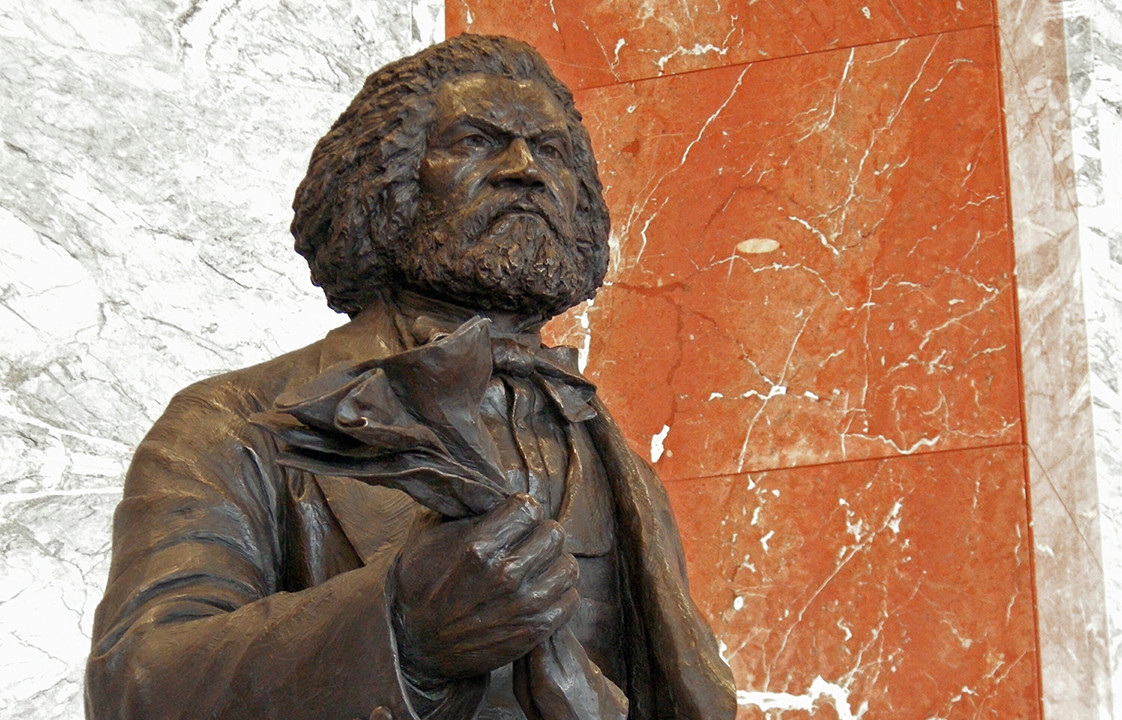
Washington to Get Bronze Representative in Capitol
WASHINGTON — Perhaps nowhere in America do the people of the District of Columbia feel less respected than in the District of Columbia. Their lone delegate to the House must sit, seething, as Congress approves the District’s annual budget, absent the vote of that delegate, who is prohibited from voting in the House.
A statue of Frederick Douglass, waiting nearby since 2007, will be moved to the Capitol.
Residents’ license plates proclaim not the glory of the District’s natural beauties or its bountiful fruits, but instead pout defiantly: “Taxation Without Representation.”
Only slightly less insulting to residents than their lack of a voting member of Congress is the fact that the District has never been represented in statue form in the city’s most glorious building. For years, lawmakers refused to permit the District the two statues in the Capitol that each state is permitted, pointing out that the District, in fact, is not a state.
But this week lawmakers approved a measure permitting a statue of the abolitionist Frederick Douglass, which has been holed up for years in a District government building a mile away, to be placed in the Capitol, as soon as President Obama signs the bill. The Frederick Douglass Residence, open as a museum, sits not far from the Capitol.
“It’s of great importance to the residents of the District who are in a constant struggle to be both perceived and acknowledged as the full and equal American citizens that we are,” Delegate Eleanor Holmes Norton, who represents the District of Columbia (as far as she is permitted), said in an interview.
Ms. Norton has been laboring for years to bring a statue of Douglass, as well as one depicting Pierre L’Enfant, who planned the District, to the Capitol. The sculpture of Douglass, completed by the artist Steven Weitzman in 2007, and the one of L’Enfant, both paid for by the District, have been sitting at One Judiciary Square. For years, Congress has wrangled over their placement, interjecting fights over gun laws and voting rights into the debate.
Ozier Muhammad/The New York Times
A statue of Frederick Douglass, waiting nearby since 2007, will be moved to the Capitol. But with the help of Representative Dan Lungren, Republican of California,and Senator Charles E. Schumer, Democrat of New York, the legislation made it through the needle this week. “I am grateful that Congress finally got this done,” Mr. Schumer said of the bronze statue of Douglass, depicted standing next to a lectern, his face serious, his hand clutching paper.
Among the roughly 180 statues and busts throughout the Capitol, only two depict blacks: Sojourner Truth in Emancipation Hall and the Rev. Dr. Martin Luther King Jr. in the Rotunda.
“Frederick Douglass’s presence in the U. S. Capitol will honor this institution and serve as an enduring testament to this nation’s struggle for freedom and equality,” Mr. Lungren said in a statement. He also introduced an amendment that would allow the District and each United States territory to have one statue added to the states’ collection.
Ms. Norton vowed to keep fighting for a second statue representing the District. “We pay full and equal taxes,” she said, “we have fought in every war that has been fought, and so we have sought not only our equal voting rights but our equal representation in the halls of citizenship.”


